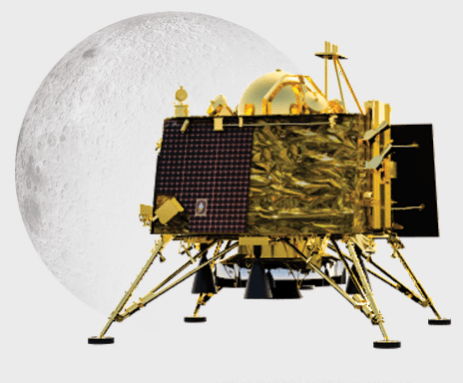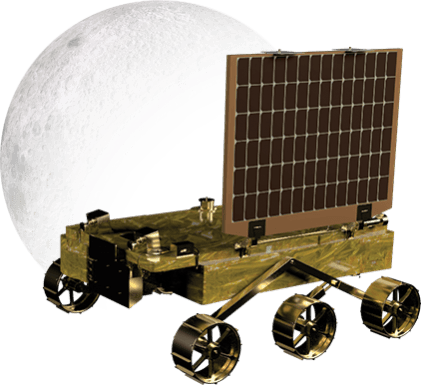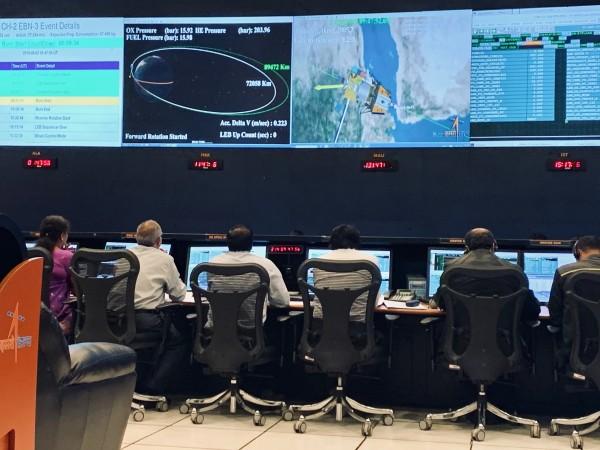
India's Vikram lander is ready for a historic tryst with the Moon's southern polar region on Saturday after the second 'de-orbit' manoeuvre took it to the 35km x 101km orbit early on Wednesday. On Monday the lander that carries the rover, Pragyan, in its belly separated from Chandrayaan 2 that has been on the lunar orbit since reaching there on August 20 after an arduous journey since its launch on July 22.
After Vikram separated from Chandrayaan 2, it underwent the first 'de-orbit' manoeuvre to bring it closer to the current orbit. Vikram will do a powered descent to the lunar south polar region on the far side of the Moon on Saturday after the cameras onboard Vikram have thoroughly monitored the landing site. The soft-landing of Vikram will make India only the fourth country after the USA, Russia and China to achieve soft-landing on the lunar surface.

Indian Space Research Organisation (ISRO) says Vikram will continue to go around the Moon getting as close as 35 km and going as far as 101 km with each revolution until Saturday's controlled descent to the surface. Chandrayaan 2 will continue to maintain its current orbit of 96km x 125km, according to the ISRO website. "With this manoeuvre the required orbit for the Vikram lander to commence it descent towards the surface of the Moon is achieved. The Lander is scheduled for powered descent between 0100 and 0200 hrs IST on September 07, 2019, which is then followed by touch down of the lander between 0130 - 0230 hrs IST," ISRO said.
An ISRO tweet said on early Wednesday: "The second de-orbiting manoeuvre for #Chandrayaan spacecraft was performed successfully today (September 04, 2019) beginning at 0342 hrs IST." ISRO says all systems of the lander and the orbiter are functioning normally and are being constantly monitored.
#ISRO
— ISRO (@isro) September 3, 2019
The second de-orbiting maneuver for #Chandrayaan spacecraft was performed successfully today (September 04, 2019) beginning at 0342 hrs IST.
For details please see https://t.co/GiKDS6CmxE
Once the 1,470kg lander touches down it will release the rover, Pragyan, which carries the scientific payload for conducting experiments on the lunar surface. Vikram will lay a ramp for the 27kg rover to roll down to the lunar surface on its six wheels. The rover generates 50W power from solar energy for its locomotion and communicating to the lander. The lander can send signals directly to the Earth stations.
ISRO chairman K Sivan says the current moon mission is returning invaluable data to the monitoring centres, as they will be used for the next mission Chandrayaan 3 that will be a pioneering robotic space mission in collaboration with the Japanese space agency JAXA, scheduled for 2024.

The entire scientist community in the country is keeping the fingers crossed because of the risk involved in the powered descent. The last mission to the Moon from the Earth, which was Israel's Baresheet spacecraft, crashlanded while trying the powered descent after its main engine failed. ISRO has experience impacting the lunar surface with a probe having done that successfully in the 2008 Chandrayaan 1 mission. But soft-landing to avoid damage the lander's scientific payload including the rover is a different ball game.
Chandrayaan 2, the orbiter that took Vikram and Pragyan to lunar orbit, was launched on July 22 by India's most powerful rocket GSLV Mk3 from the Vikram Sarabhai Space Centre in Sriharikota. Within minutes of the takeoff, the three-stage launcher placed Chandrayaan 2 on an elliptical orbit that at the closest to the Earth was some175km. After a series of earth-side orbit raising manoeuvres, Chandrayan 2 was raised to 221 x 143,585km orbit getting it ready for the translunar journey. The orbiter was catapulted with a final push on its journey of more than 400,000 km to the lunar orbit on August 14. The risky lunar capture was achieved on August 20 when Chandrayaan 2 was slowed down to enable its capture in the lunar orbit.








